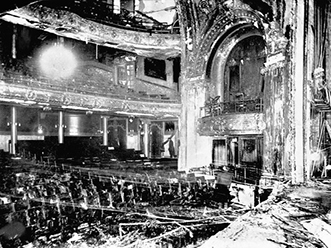President’s Message
An FSCI update from Keith Frangiamore, FSCI President
Jimbo Schifiliti Retires
As many of you may already know, Fire Safety Consultants founder Jimbo Schifiliti officially retired this past October marking the end of an era and career that spanned over four decades. Despite his retirement, Jimbo intends to stay connected to the fire protection community.
In his 45 plus year career in fire protection, Jimbo has made many great friends and has impacted the lives of many through his dedication to fire safety. Jimbo has been an active participant in several international codes and standards committees since his career began in 1970, and has provided fire protection systems instruction for thousands of fire and building professionals. Jimbo is also an active member of IFSTA committees that provide training materials for the fire service.
We recently asked Jimbo about FSCI’s early years and what memories standout from his career. He shared the following thoughts:
“In January 1983, I started Fire Safety Consultants, Inc., now FSCI, as a fire protection design and plan review/inspection firm out of my home in Schaumburg, IL. I started doing design work for Jewel Foods, Homart Development, Sears, NWS Architects, and WMA Engineers.
“In 1987, I had about sixteen plan review municipalities in the Chicago area. Some of them I recall (still our clients today) were Rolling Meadows, Niles, Hoffman Estates, Vernon Hills, Cary, Lincolnshire, and Buffalo Grove. Some projects we consulted on include; The Statue of Liberty in New York City, Library of Congress in Washington DC, Library of Congress film archives vaults in California, Sears Tower in Chicago, 3M locations across the country, Niagara Mohawk nuclear power plant in New York, and Spring Hill Mall in Illinois.
“Some of the plan review projects I have worked on include; Chrysler World Headquarters in Auburn Hills Michigan, Sears World Headquarters in Hoffman Estates Illinois, Crittenden Hospital in Rochester Hills Michigan, The Palace in Auburn Hills Michigan, and Northville Municipal Center in Northville Michigan.
“I started teaching seminars in 1986 for the State of New Jersey and other seminar clients including; Illinois Fire Inspectors Association, NFPA, National Sprinklers Contractors Association, State of Michigan, South Carolina Fire Inspectors, Utah Fire Inspectors, BOCA International and State of Ohio. I have taught in Alaska, Canada, Mexico, and Venezuela. I also spent a year as an adjunct professor teaching fire protection at Oklahoma State University, my alma mater.
“I started doing plan review in Michigan about 1986 for the City of Rochester Hills meeting Fire Chief Greg Walterhouse while teaching a seminar in the Detroit area. Soon I started working for Auburn Hill Fire Department with Greg’s brother, Mark Walterhouse. FSCI now provides various services for over 50 clients in Michigan.”
We all wish Jimbo the best in his retirement and hope he continues to stay active in the fire protection community for as long as he wants!
Jimbo remains on the Board of Directors of FSCI, and is a valuable resource as FSCI continues to improve and expand our client services.
Learning From the Past
There are no shortages of fire tragedies in America where multiple fatalities have occurred:
- Iroquois Theater, Chicago, December 3, 1903
- Triangle Shirtwaist Factory, New York, March 25, 1911
- Cocoanut Grove Nightclub, Boston, November 28, 1942
- Our Lady of the Angels School, Chicago, December 1, 1958
- Station Night Club, West Warwick, RI, February 20, 2003
Immediately following these and other tragic fires, changes to building, fire and life safety codes rose from the ashes. Post fire investigations revealed dangerous conditions affecting life safety. Code changes that addressed these conditions were developed. These changes have had a major impact in the reduction of fire fatalities here in America, and across the world.
Once billed as “Fire-Proof”, the Iroquois Theater fire resulted in 602 fatalities. Lack of fire sprinklers, insufficient fire exits, and a faulty design of the proscenium curtain resulted in major code changes affecting theater occupancies. Panic bars on exit doors that swing in the direction of egress became the standard. Separation requirements were developed between the stage and the crowd.
The Triangle Shirtwaist Factory fire brought about changes in occupant loads and how stairwell and exit widths are calculated. The Cocoanut Grove Nightclub fire raised awareness of the dangers associated with flammable interior finishes and the use of revolving doors as main entrance/exits in places of assemblies. Overcrowding of the nightclub at the time of the fire resulted in a heightened awareness of the importance of not exceeding the occupant load limitations in places of assembly.
The Our Lady of the Angels School fire sparked changes in stairwell designs in schools including non-combustible stairwell construction protected by self-closing fire doors, or automatic closing fire doors released upon activation of the fire alarm system. Additionally, open transoms above classroom doors designed to improve ventilation are no longer allowed. Most recently, the Station Night Club fire brought about changes in requirements related to automatic fire sprinklers and the use of pyrotechnics in places of assembly.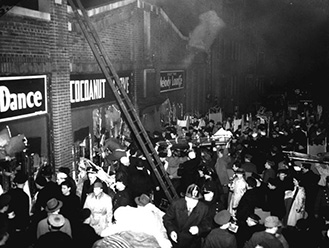
These examples remind us that those involved in the code development process must continue to respond to tragedies with responsible code changes. Equally important to a reactive response to tragedies is the pro-active approach to code development. Emerging topics of discussion such as lithium battery energy storage systems, NFPA 13R-protected buildings with combustible exteriors, and cross laminated timber construction will require extensive study to ensure that the public remains safe from future fire disasters.
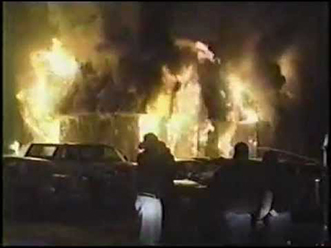 To that end the ICC has appointed an ad hoc committee to study the use of cross laminated timber in high rise buildings. Underwriters Laboratories is conducting a study on the use of energy storage systems using large numbers of lithium batteries. The NFPA recently conducted a symposium on attic sprinkler protection in combustible buildings using NFPA 13R sprinkler systems. If you have strong opinions on these or other code related issues you are urged to contact your local ICC Regional Manager and let your voice be heard.
To that end the ICC has appointed an ad hoc committee to study the use of cross laminated timber in high rise buildings. Underwriters Laboratories is conducting a study on the use of energy storage systems using large numbers of lithium batteries. The NFPA recently conducted a symposium on attic sprinkler protection in combustible buildings using NFPA 13R sprinkler systems. If you have strong opinions on these or other code related issues you are urged to contact your local ICC Regional Manager and let your voice be heard.
At FSCI we are committed to the code development process. Warren Olsen, Vice President of Building and Life Safety, chairs Chapter 26, Supervising Station Alarm Systems, of the National Fire Alarm and Signaling Code NFPA 72. Harrison Bradstreet serves as an alternate on the committee.
Keith Frangiamore, President of FSCI, is a member of the Educational and Day Care Committee of Life Safety Code, NFPA 101. George Michehl serves on the Fire Code Action Committee, a sub-committee of the Fire and Life Safety Section of the International Fire Chiefs Association. This strong commitment to the code development process translates to a deep understanding of the code, why they exist and how to apply them.
At FSCI, we recognize that proactive research and study coupled with the lessons learned from the past must guide those involved in the code development process. As our codes move forward so too must we in our quest to serve our clients with the most up to date information. We also encourage our clients to get involved in the code development process. Both the ICC and the NFPA frequently look for people just like you to participate in their respective code and standard development processes.
Employee Spotlight
Who is Gina Giannone?
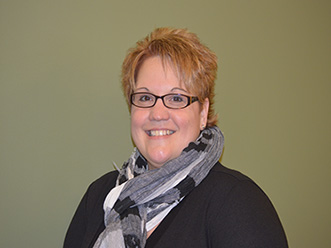 Gina Giannone has been with Fire Safety Consultants for close to 3 years. Gina works as an administrative assistant in the Illinois corporate office. Prior to coming to FSCI, Gina worked for Zurich Financial Services, Foresite Realty Partners and Arthur J. Gallagher. Previously she has held positions of Global Business Management Coordinator, Office Manager/HR Representative and Manager of Account Services.
Gina Giannone has been with Fire Safety Consultants for close to 3 years. Gina works as an administrative assistant in the Illinois corporate office. Prior to coming to FSCI, Gina worked for Zurich Financial Services, Foresite Realty Partners and Arthur J. Gallagher. Previously she has held positions of Global Business Management Coordinator, Office Manager/HR Representative and Manager of Account Services.
Gina supports many divisions within the company. Chances are very good that if a client or contractor has received a plan review report from the Illinois office it has been reviewed and finalized by Gina. In addition to this work Gina is actively involved with FSCI’s Training and Marketing teams. Gina prepares all Power Point programs for presentation, and works directly with existing and potential clients in scheduling and coordinating details ahead of any seminar presentation dates. As a member of FSCI’s Marketing Team, Gina prepares all materials and logistics for vendor shows and exhibits that the company participates in, and providing input on improving marketing strategies.
Gina holds a Bachelor’s Degree in Global Business from the University of Phoenix.
Gina and her husband Charlie (a retired firefighter of more than 25 years) have one son, Bryan, currently a high school senior, who will be heading off to University of Arizona in the fall to study Bio-Medical Engineering. Gina, a big Cubs and Blackhawks fan, enjoys travelling with Charlie, watching Bryan’s lacrosse games, and cooking like Rachel Ray.
Who is Brent Gooden?
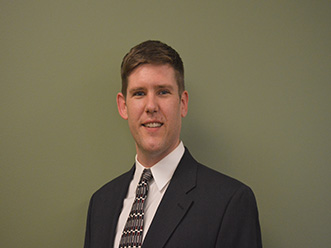 Brent Gooden has been with Fire Safety Consultants for more than 9 years. Brent works as a fire protection consultant in the Illinois corporate office and is the liaison to the Michigan regional office. He formerly served as the manager of the Michigan office before moving back to the Illinois with his family. Prior to coming to FSCI Brent worked as a manager at AON.
Brent Gooden has been with Fire Safety Consultants for more than 9 years. Brent works as a fire protection consultant in the Illinois corporate office and is the liaison to the Michigan regional office. He formerly served as the manager of the Michigan office before moving back to the Illinois with his family. Prior to coming to FSCI Brent worked as a manager at AON.
While Brent was in Michigan he was extremely active in the many industry groups (fire, building, and mechanical) whose members FSCI works with on a daily basis. Back in the Illinois office Brent continues to conduct fire protection plan reviews for the company’s Montana clients as well as our clients from across the country. Brent also performs field inspections for many of our clients in Illinois and Wisconsin.
Brent serves on the company’s Marketing and Training teams. He develops and teaches fire protection seminars nationally for FSCI. Brent holds a Bachelor’s Degree in Business Management from Aurora University, NICET certification in water-based layout and fire alarms, and is ICC certified as a fire plans examiner.
In his spare time Brent enjoys sports, running, camping and spending time with his family.
Little Known Facts
NFPA 25, 2014 Edition
Water-based sprinkler systems are required to be inspected, tested, and maintained annually. But, did you know that there are specific requirements based on the type of sprinklers installed on the system? The property owner or designated representative shall be responsible for properly maintaining a water-based fire protection system. NFPA 25 requires that sprinklers be replaced, or a representative sample be sent out and tested, at the 50 year mark and then every 10 years after that. NFPA 25 also includes specific requirements for Dry Type (pendent, sidewall, or upright) sprinklers. The testing or replace requirement for this type of sprinkler is at the 10 year mark. A summary of sprinkler system inspection, testing, and maintenance requirements can be found in Table 5.1.1.2.
Rosie Simarano – Fire Protection Consultant
NFPA 13, 2016 Edition
One of the most commonly missed, and misunderstood sections, of NFPA 13 relates to obstructions of the sprinkler discharge pattern. There are multiple sections in Chapter 8 that relate to different types of sprinklers. Obstructions are difficult to identify during the plan review process because we are looking at a top down, two dimensional representation of a real, three dimensional space. Finding obstructions to sprinkler spray patterns during a field inspection are very common. One of the most overlooked obstruction is the mechanical hood in commercial kitchens. The Type I hoods that the cooking process takes place under are required to be protected with an alternate suppression system (a wet chemical system) and this is perfectly acceptable. What about the Type II hoods? The hoods over enclosed pizza ovens, warmers, and dish washing equipment are often overlooked. Type II hoods do not require an alternate suppression system, and almost always meet the “over four feet” obstruction to the sprinklers spray pattern (NFPA 13 – 8.5.5.3.1). Sprinklers are required to be provided within or under Type II hoods when the ceiling sprinklers cannot provide protection below them.
Matt Davis – Senior Fire Protection Consultant
NFPA 13D, 2013 Edition
NFPA 13D section 7.1.1 states: “A single control valve arranged to shut off both the domestic system and the sprinkler system shall be installed on NFPA 13D systems unless a separate shutoff valve for the sprinkler system is installed in accordance with 7.1.2.”
This arrangement is meant to ensure that the sprinkler system will not be inadvertently turned off. Having the water to the entire residence turned off for a sprinkler system repair will require the home owner to complete whatever repairs are necessary to turn the sprinkler system water back on. If there is not a separate shut off valve for the sprinkler system, the sprinkler system will always be operable when the water in the residence is available for domestic use. Where a separate sprinkler system shut off valve is installed, the residence must comply with the monitoring requirements according to Section 7.1.2.
Paul Sullivan, Fire Protection Consultant
SEMINARS
Stay up to date on the latest Fire, Building and Life Safety code changes and equipment by attending one of our seminars. FSCI is teaching seminars throughout the United States, led by our experienced staff of Matt Davis, Keith Frangiamore, Brent Gooden, George Michehl & Warren Olsen.
Whether you are a Contractor, Architect, Technician, Engineer or an Authority Having Jurisdiction, each seminar is full of practical insights and first-hand experiences to help you comply with applicable codes and standards. FSCI can also provide custom seminars at your location. Be sure to check out our schedule of upcoming seminars on our website. Contact us to learn more by emailing [email protected] or by calling our office at (847) 697-1300.
Upcoming Seminars:
May 31, 2016 – IFIA – Inspector II – Keith Frangiamore
June 6-8, 2016 – NFPA – National Fire Alarm & Signaling Code – Warren Olsen
June 13-15, 2016 – NFPA – Basic Fire Alarm Plan Review – Warren Olsen

